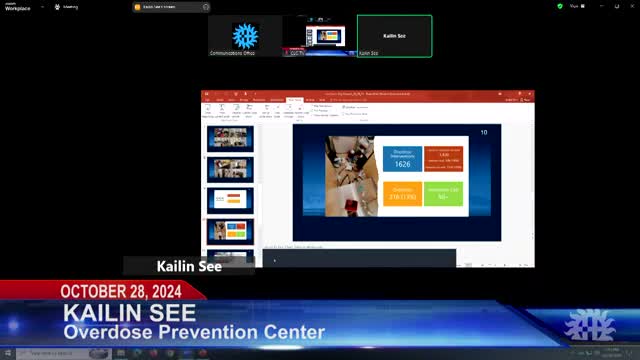Innovative approach tackles fentanyl overdoses on-site
October 29, 2024 | Las Cruces, Doña Ana County, New Mexico
This article was created by AI summarizing key points discussed. AI makes mistakes, so for full details and context, please refer to the video of the full meeting. Please report any errors so we can fix them. Report an error »

In a recent government meeting, officials discussed the alarming rise in overdose incidents, particularly those involving fentanyl, and the innovative response strategies being implemented to address this crisis. The meeting highlighted that approximately 50 ambulance calls were made in response to over 1,600 overdose interventions, underscoring the severity of the situation.
The team emphasized their proactive approach, stating that they prioritize resolving overdose situations on-site rather than calling emergency services unless absolutely necessary. This strategy aims to alleviate pressure on emergency medical services (EMS) and keep individuals out of emergency rooms. The discussions revealed that many of the overdose cases involved individuals with underlying health conditions, such as chronic obstructive pulmonary disease (COPD).
A significant point of discussion was the use of naloxone, a medication designed to reverse opioid overdoses. It was reported that naloxone was administered in only 18% of the cases, with a focus on microdosing using an injectable formulation rather than the more common nasal spray. This method aims to avoid precipitated withdrawal, a condition that can occur with larger doses of naloxone, which often leads individuals to leave the site of care prematurely.
The officials stressed the importance of maintaining medical stability for individuals experiencing overdoses. By limiting naloxone use and emphasizing oxygen support, the team aims to keep individuals at the intervention site, reducing the risk of them leaving in a vulnerable state and potentially experiencing further medical emergencies.
The meeting concluded with a commitment to continue refining these strategies to effectively manage overdose incidents and improve outcomes for those affected by substance use disorders.
The team emphasized their proactive approach, stating that they prioritize resolving overdose situations on-site rather than calling emergency services unless absolutely necessary. This strategy aims to alleviate pressure on emergency medical services (EMS) and keep individuals out of emergency rooms. The discussions revealed that many of the overdose cases involved individuals with underlying health conditions, such as chronic obstructive pulmonary disease (COPD).
A significant point of discussion was the use of naloxone, a medication designed to reverse opioid overdoses. It was reported that naloxone was administered in only 18% of the cases, with a focus on microdosing using an injectable formulation rather than the more common nasal spray. This method aims to avoid precipitated withdrawal, a condition that can occur with larger doses of naloxone, which often leads individuals to leave the site of care prematurely.
The officials stressed the importance of maintaining medical stability for individuals experiencing overdoses. By limiting naloxone use and emphasizing oxygen support, the team aims to keep individuals at the intervention site, reducing the risk of them leaving in a vulnerable state and potentially experiencing further medical emergencies.
The meeting concluded with a commitment to continue refining these strategies to effectively manage overdose incidents and improve outcomes for those affected by substance use disorders.
View full meeting
This article is based on a recent meeting—watch the full video and explore the complete transcript for deeper insights into the discussion.
View full meeting
